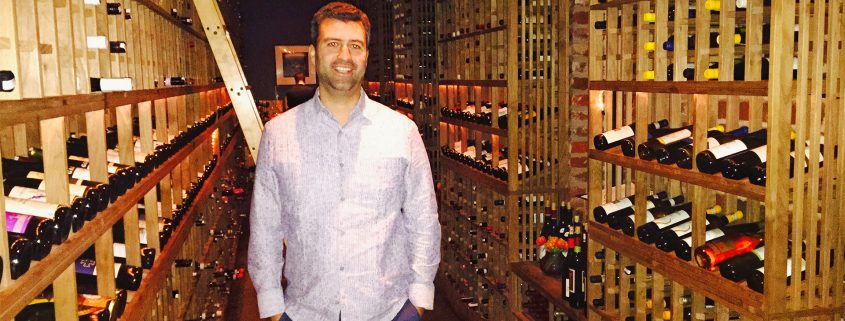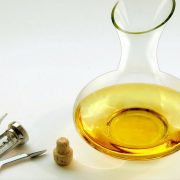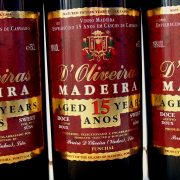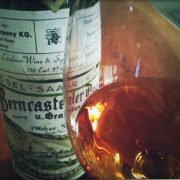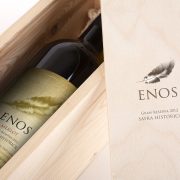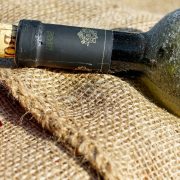Which Wine Do I Order? – A guide to California Wine
We’ve all been a similar situation before: you are going to visit some friends for dinner and they asked that you bring the wine. Or perhaps it happens this way: you are at a restaurant with your boss or clients and need to select a bottle for everyone’s meal. All of a sudden you are confronted with hundreds of different wine varieties and blends, none of which you recognize. The pressure is on – a bad or wrong wine can make you look ignorant. Ahhh! What to do?
I have been asked to write on this topic on several occasions, but have stayed away from it for the same reason everyone else has. How am I to know what you like? The answer, of course, is that everyone is different. Therefore, I will not attempt to describe every wine in the world. Instead, I thought that it would be helpful to explain what certain information on the label means. Knowing this will help you to better understand what you like and to then order wine accordingly.
As the global wine industry continues to grow, and as the average consumer gains access to more wines from different regions, the choices will only broaden and become more intimidating. To complicate things further, specific wines vary from year to year. The United States approves and recognizes over 300 different grape varietals, grown in over 160 distinct regions. American growers are free to plant whichever varietal they like on any piece of soil, and then combine them in the bottle. It is not uncommon to see blends of Tempranillo and Sangiovese, or Chardonnay and Sauvignon Blanc. And who knows – maybe all four will be bottled together some day. My opinion on this matter is similar to many Americans – do whatever to make the best wine possible.
In the past twenty years, Americans have seen a series of new wine labeling laws passed – some modeled after European laws, but many pioneered as we learn more about our vast landscape. The U.S. is a newly planted country (less than 200 years), with new regions being discovered all the time. Because some have developed reputations faster than others, laws are important to protect against infringers upon this reputation.
It is not surprising that the first U.S. wine region to be protected is also its most famous and highly regarded – Napa Valley. To declare Napa Valley on the label, law now mandates that 85% of the juice in the bottle must be from within Napa’s boundaries. This should be obvious, but wines and wineries from other regions used to put the word “Napa” on the label as a marketing tool. Napa has a good reputation, so the average consumer in a store might read it and think “Oh! Napa, it must be good,” then buy it, when the reality was that the wine was from nowhere near Napa. Good Cabernet grapes from Napa Valley can sell for as much as $20000 per ton, while the same grape from the central Valley of California can sell for as little as $180 a ton important site. Napa vintners felt that they were being taken advantage of, hence the law. Now Sonoma is in the courts to pass comparable rules.

California pioneered labeling wines with the type of grape in the 1960’s. To list the type of grape on the bottle (e.g. – chardonnay, merlot, etc…), 75% of the wine in the bottle must be of that varietal. This might seem unusual to list, as most old world countries value regions more than grape types, and will expect the consumer to know the varietal allowed by law. Blends that are not 75% of any single varietal are listed as “Table Wines.” This term, unfortunately, has a negative connotation for many consumers, as many of America’s best wines are blends. To combat this, American winemakers are allowed to name their wines in any way they choose and often come up with colorful names such as Red Truck, Conundrum, or Fat Bastard to give a few examples. The Meritage Society was also created to promote wines composed of only the Bordeaux Varietals (Cabernet Sauvignon, Cabernet Franc, Merlot, Petite Verdot, and Malbec.) For a fee, winemakers may place the words “Meritage Wine” on the bottle, which has become more recognizable in the past decade.
This is part of a rule known as the 75-85-95 percent rule. The rest of the rule requires that 85% must be of a single vintage to list the year on the bottle. Finally, to list the vineyard (e.g. Peter’s Vineyard), 95% must be from that specific vineyard. A small percentage from other areas can be blended in, but most vineyard designates are usually 100%. The specificity of the region listed is often an indication of a better quality wine.
Often bottles will advertise the words “Estate Wine” on the label. This means that 100% of the grapes were grown on the winery’s property and that the resulting wine was 100% produced at its facility. This is often a stamp of quality as the winery has had complete control of its product.
Another phrase often added to labels, which I feel is grossly misunderstood, is the term “Reserve” or “Reserve Wine.” In other countries, for example, Spain, the word has exact parameters, such as grape variety and yield per acre, time in oak barrels, and amount of time spent cellared before the winery releases the finished wine. I was surprised to find that in the United States, there have never been any such laws in place. “Reserve Wines” of course signify a higher level of quality, but how one achieves this level is left completely up to the winery. It could be as simple as tasting wine out of ten barrels and then labeling the barrel that tastes the best with reserve. The only rule is that for a winery to create a reserve wine, a non-reserve wine must be produced as well. Otherwise, every winery would make only reserve wines and the term would lose all meaning.
As far as graphics go, wineries realize how directly related the look of the label is to wine sales. Wine labels are basically broken up into two main categories. Fun labels, often with colorful cartoons or humorous names, are geared toward the younger or more unassuming crowd. Labels depicting animals have been proven to sell better. The other type is usually more serious – often printed in calligraphy, and sometimes with a black-and-white lithograph of the estate grounds or winery. This “refined” look might be geared toward older, or more established consumers.
Whichever route the winery chooses for the face of its wine, it needs to be original, memorable and un-cluttered. Information on nuances, blend percentages, winery history, bar codes, or anecdotes are often moved to the back label. One thing unique to American labeling is the Surgeon General’s warning – which must be placed on any alcoholic beverage and states that pregnant women should not drink and not to operate a car after drinking. This warning was established in 1989 and frees American companies from being held liable in the case of an accident. A “contains sulfites” warning safeguards against allergic reactions.
At this point, you might ask yourself – how is this going to help me in the supermarket or wine store surrounded by a thousand different brands of wine? The answer that is the more you, as the consumer can determine about the wine by looking at its label, the surer you can be about making a sound choice. It all comes down to helping you catalogue your experience. For example, you might buy a Syrah from the Central Coast of California and love it. Remember that. Then the next time you visit a store you can look for different varietals made by the same producer, for another Syrah, or for another wine from the Central Coast. The more you experience different types of wine, the more you will increase your chances of recognizing something on a restaurant list. The idea here is to learn what you like – that’s also half the fun!

